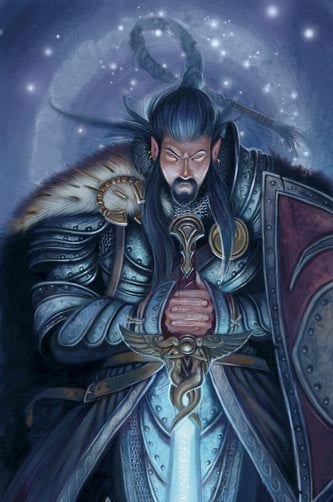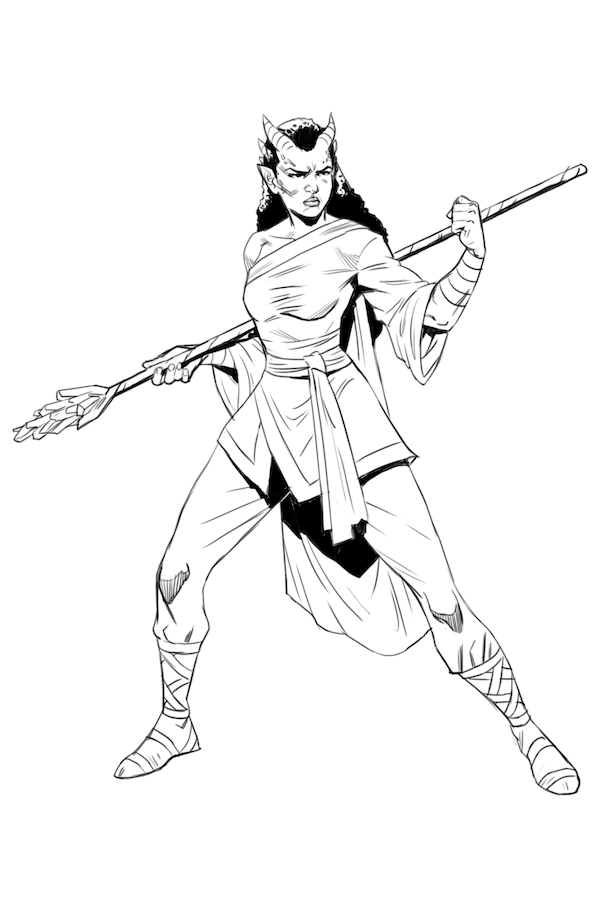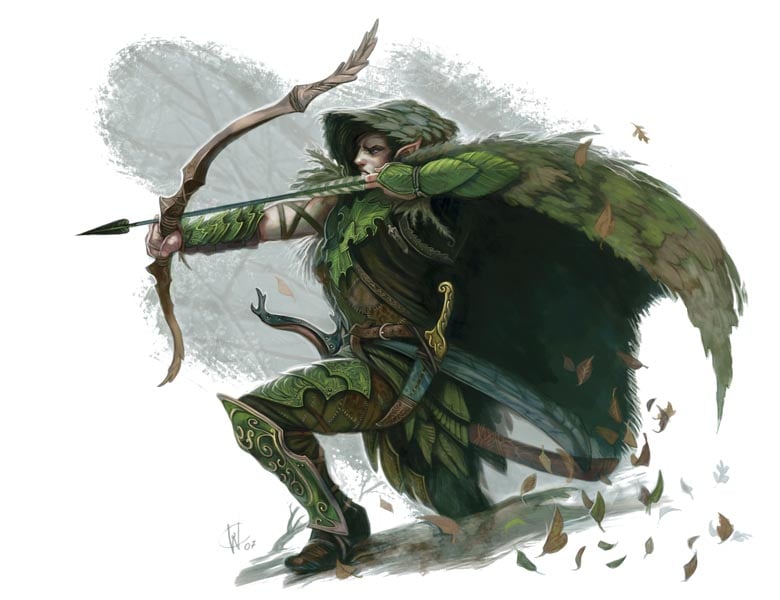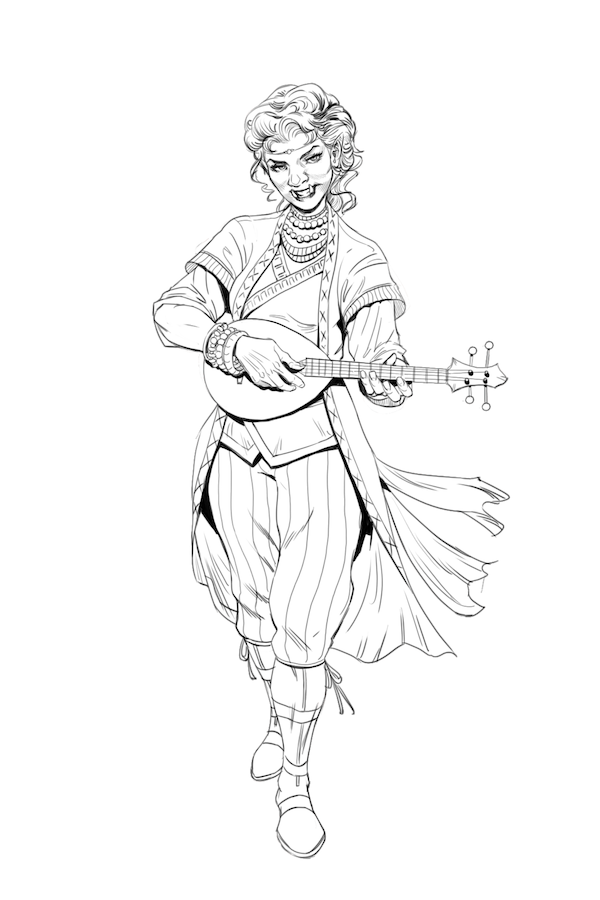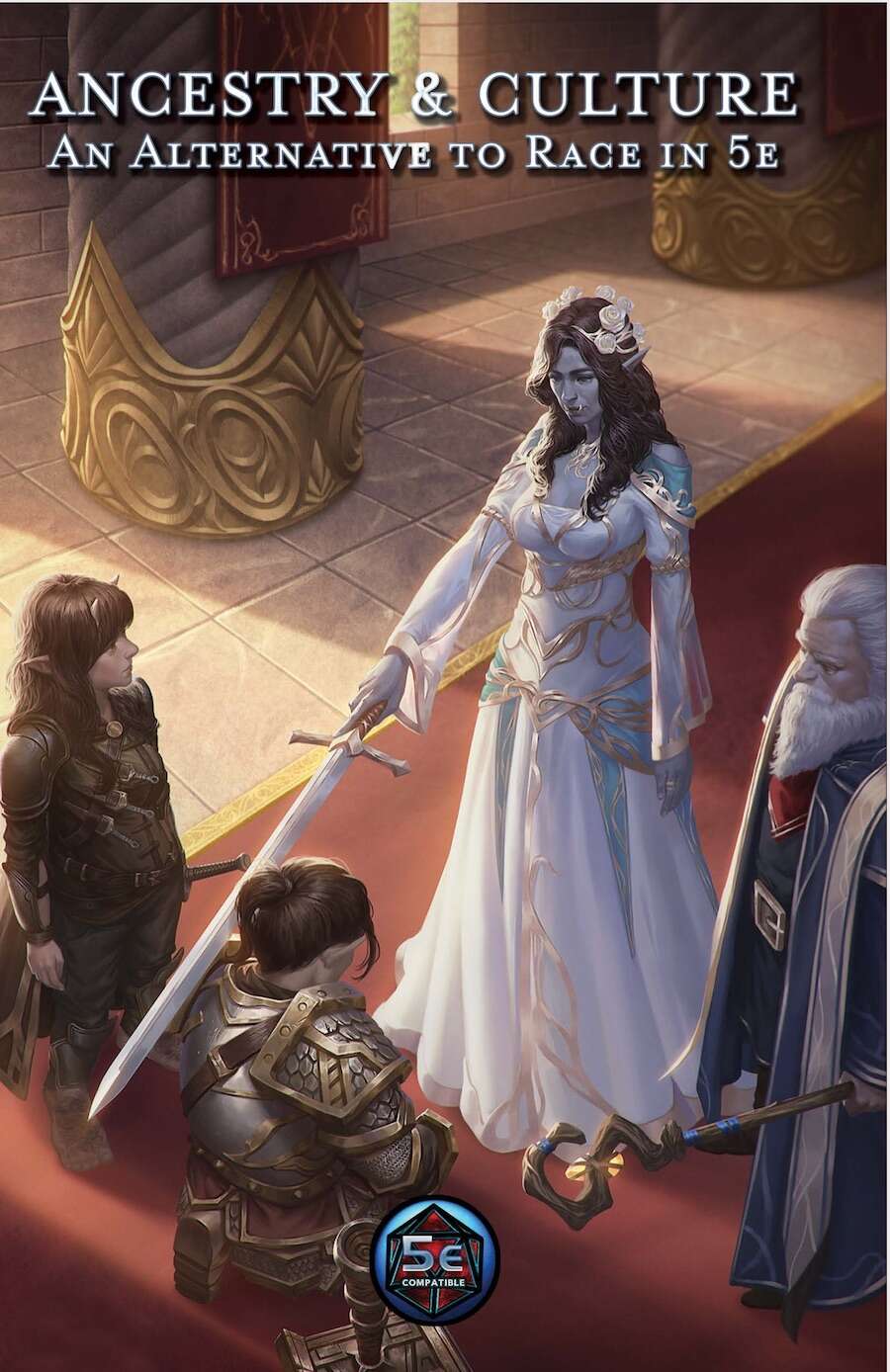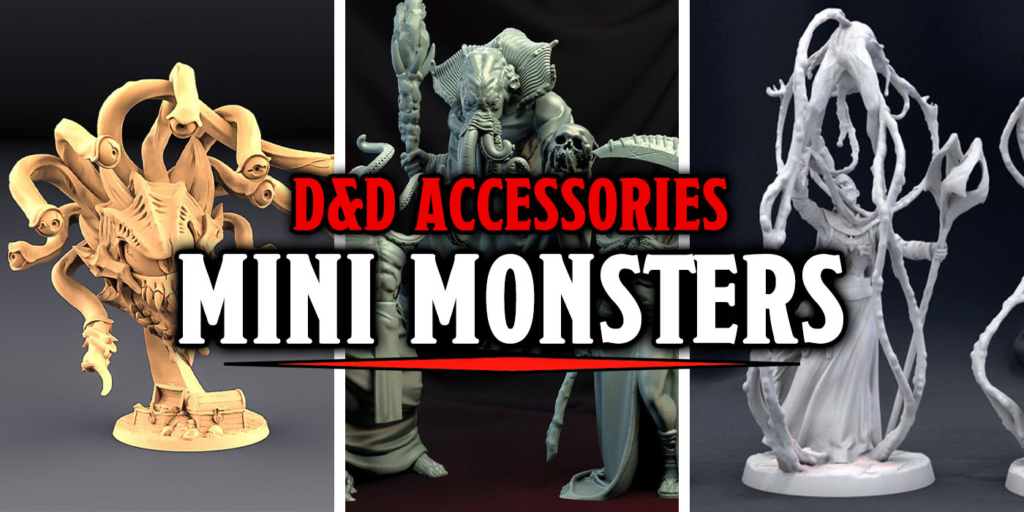D&D: Ancestry & Culture – An Alternative To Race In 5th Edition
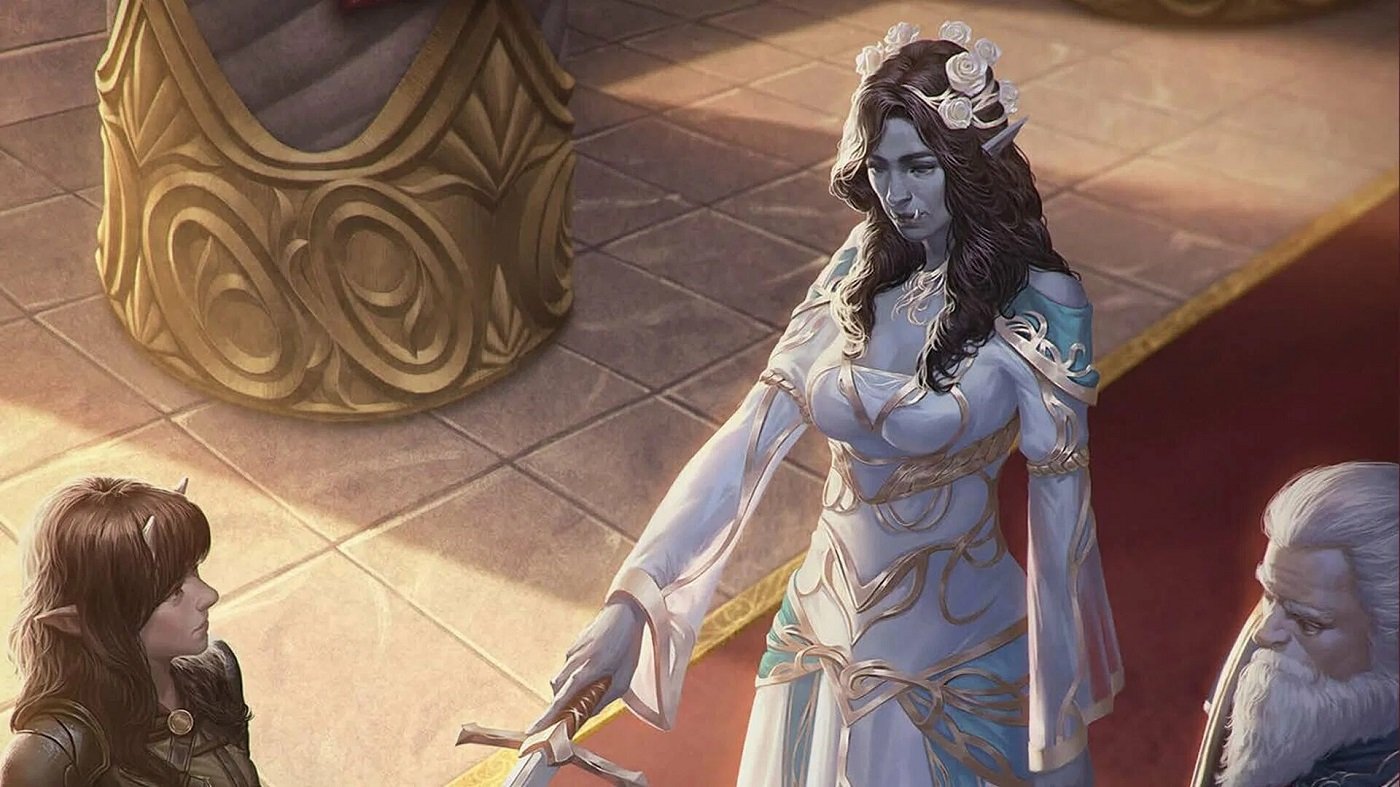

A new bestseller on DrivethruRPG outlines character creation rules that replace race with ancestry and culture, and opens the door to better customization.
In their recent Diversity Statement, Wizards of the Coast promised an upcoming product would change the way race works in D&D, giving players an option for creating characters without relying on racial ability scores. Racial ability modifiers, for better or worse, have long been baked into D&D’s DNA, but that seems to be changing–and faster than you think. A new set of rules has been making waves on DriveThruRPG, offering players a new way to build characters. Today we’re looking at Ancestry & Culture by Arcanist Press. This system of rules breaks down the idea of race, separating it out into, as the name suggests, Ancestry, Culture, and even later on mixed Heritage and rules for building your own custom cultures.
We’ve talked before about how racial ability scores can be limiting, as have many others–and this comes at it from a mechanical perspective that lets you build the narrative you want. There’s an argument that goes something like “shouldn’t a gnome be less strong than a half-orc?” but when you look at it, there’s nothing that keeps a gnome or halfling from having 20 strength, it just takes them longer to get there. That’s where products like Ancestry & Culture or the Class Modifier Module from GabeJamesGames come in. Both of these products take on the idea that your stat bonuses should be entirely determined by whether or not your character is a dwarf or an elf or a half-orc.
This concept seems to be a tricky one for many folks to grasp. And it’s little wonder–stat modifiers have been tied to what your player character is since the beginning of D&D. WotC themselves acknowledge that this needs to change:
Later this year, we will release a product (not yet announced) that offers a way for a player to customize their character’s origin, including the option to change the ability score increases that come from being an elf, a dwarf, or one of D&D’s many other playable folk. This option emphasizes that each person in the game is an individual with capabilities all their own.
Arcanist Press’ new product provides a fantastic set of rules that are easy to drop into your ongoing games, very little has to change mechanically, indeed you could play it as straightforward as having your High Elf still have most of the same mechanical benefits, just coming from two different sections: Elven Ancestry and High Elf Culture.
What does that mean, exactly? All the same traits of “a 5E High Elf” are still there, but this book spells out where certain traits come from. Some, like Darkvision, Keen Senses, Movement Speed and Trance (which is an Elf’s ability to meditate instead of sleeping) come from being primarily descended from Elves. You might have a human (or other) parent, but if the characteristics of being an elf define your character, you pick Elven Ancestry.
High Elven Culture, on the other hand, is what determines your ability score increase. If you’re a High Elf you get +2 Dexterity and +1 Intelligence. You also get the languages that you know–they do away with the idea that all Elves know Elvish for being born an Elf. You might have Elven ancestry but have grown up in Dwarven culture (more on that later) and know Dwarven instead of Elvish. The same goes for features like Elven Weapon Training or the extra Cantrip that High Elves pick up.
Basically your ancestry determines things like whether or not you have darkvision, or other traits that you might consider heritable, like a Tiefling’s fire resistance or a Dwarf’s resistance to poison. Culture represents characteristics that are learned things like languages or skill proficiencies as well as stat bonuses and spells or things like Dwarven stonecunning. It’s a simple system that just says “hey being a dwarf doesn’t automatically make you good with rocks” without really changing what a 5E Dwarf looks like, ruleswise.
You might be wondering why that distinction matters, and why, if there’s not much mechanical difference, these rules have been called required reading? Arcanist Press explains:
A note on #racism in #DnD:#Race in #DnD5e is essentialist. That’s what’s wrong with it. That means it ascribes things like ability, alignment, language, & skills to race, when those are clearly cultural/learned.
CHANGING THE NAME TO “SPECIES” DOESN’T FIX IT.
1/?
Subscribe to our newsletter!Get Tabletop, RPG & Pop Culture news delivered directly to your inbox.By subscribing you agree to our Terms of Use and Privacy Policy.— Arcanist Press (@ArcanistPress) July 12, 2020
In the thread we’ve linked above, Arcanist Press outlines their philosophy, but you can find a more condensed version outlined in the introduction to the new book:
Scientists and philosophers who study race reject the concept of race as a biological fact that discretely individuates groups of people. Race is not a biological reality; rather, it is a social concept constructed and employed differently at different times in history and in different places in the world. It is not like eye color, but like citizenship: something that is based in social relations and concepts, not biology.
In other words, the concept of race as it has been used from at least the Enlightenment forward to the twentieth century is, frankly, bankrupt. This is not to say there is no such thing as ancestry, heritage, and genetic difference, of course. Indeed, our genetics are real, but they are a function of our individual ancestry, not our race. What folks call racial differences simply do not map cleanly onto anything in our biology as simplistic as the concept of race. What’s more, that concept in the real world has been used to justify historic atrocities.
Indeed, racists still use these bogus, faux-scientific justifications to support their prejudice. Because these harmful concepts have no place in our world, they need not be in the stories we tell with our friends either.
Is the system perfect? No. They admit that the game places some of the emphasis on culture instead of race, and making a whole culture sort of singularly focused–orc culture always gives +2 strength, for instance, isn’t the best look if you’re trying to move away from the problems that depictions of Orcs have brought with them in the past. But, to their credit, Arcanist Press admits this, stating that they wanted to keep things as straightforward as possible, but they provide flexible options for creating your own custom culture:
Personalized Cultural Traits
Ability Score Increase. One ability score of your choice increases by 2, and another ability score of your choice increases by 1.
Alignment. What alignment your character adopts is entirely independent of your ancestry or culture and, as such, is a personal choice.
AdvertisementPersonalized Proficiencies. You gain proficiency in two skills of your choice.
Languages and Tools. You can speak, read, and write Common. You have proficiency with one tool of your choice and speak one extra language that might be spoken in your community.
Likewise, you’ll also find rules for creating mixed ancestry creatures. You aren’t limited to half-orcs and half-elves anymore. You could create a character who has an Elf’s fey ancestry and a Tiefling’s hellish resistance, for instance. Or if you have a dragonborn ancestor, you might have their damage resistance, and an orc’s resilience. The world of character creation is much more open with this system.
You can find these rules outlined in detail in the free 30-page preview of the rules, which give players everything they need to adopt the new rules. The rest of the book contains adventures that you can run for your players once you’ve made these new characters.
Ancestry & Culture: An Alternative to Race in 5E – $9.95
– Play a character of one ancestry raised in a different culture, like an orc raised by elves
– Play a character of mixed ancestry, like the child of a gnome and a halfling
– Replace the outdated concept of Race in D&D with ancestry & culture
– Convert existing races into ancestries and cultures
– Create your own custom culture
– Comes with two friendly one-shot adventures designed for players of all ages
– Based on the successful ZineQuest Kickstarter
– Get 126 more ancestries & cultures in Custom Ancestries & Cultures and More Ancestries & Cultures
– Create cultures based on geography or the planes of existence in More Ancestries & Cultures
What do you think of these rules? Do you agree? What changes would you make to race, ancestry, and culture in 5E? Let us know in the comments!

